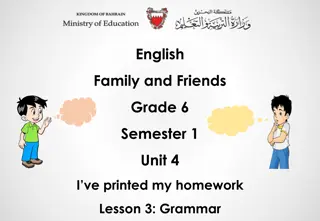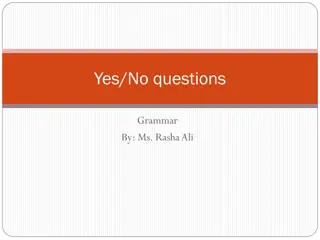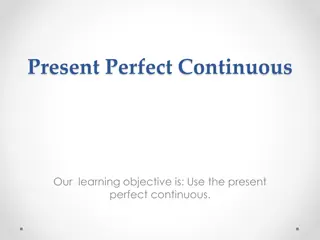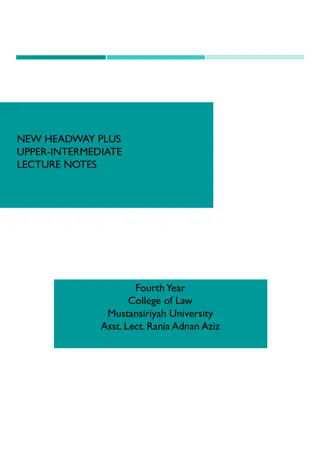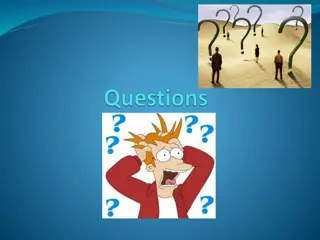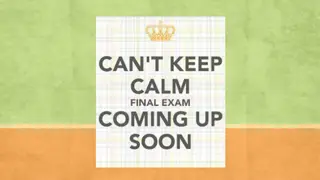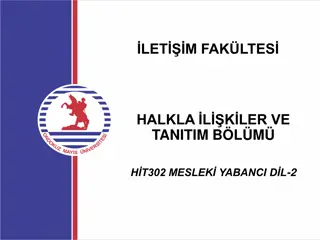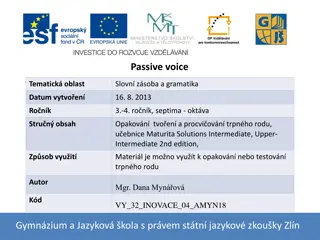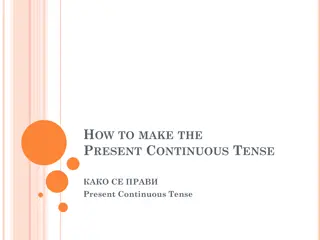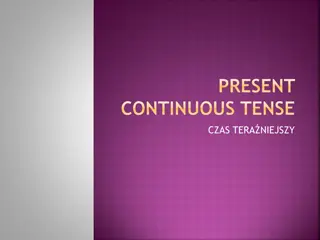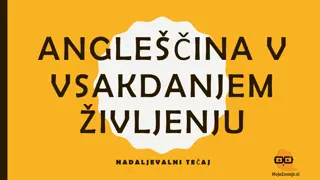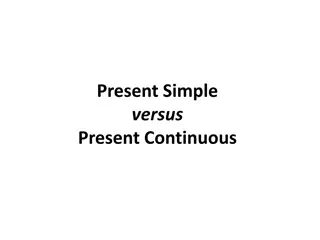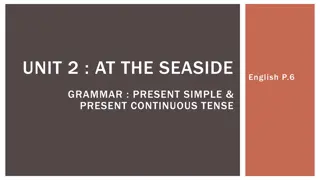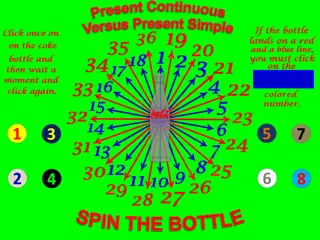Understanding Wh-Questions and Present Continuous in English
Exploring the use of different Wh-questions in English to inquire about people, time, reasons, objects, and places. Also, delving into the concept of present continuous tense, focusing on its negative form with examples provided for better understanding.
Download Presentation

Please find below an Image/Link to download the presentation.
The content on the website is provided AS IS for your information and personal use only. It may not be sold, licensed, or shared on other websites without obtaining consent from the author. Download presentation by click this link. If you encounter any issues during the download, it is possible that the publisher has removed the file from their server.
E N D
Presentation Transcript
Unit 1: Food and Health Centro Educacional San Carlos de Arag n 6 A-B-C Miss Tamara Sanhueza & Miss Cinzia Bizama
May 18th May 18th May 22nd May 22nd * Objective: To identify and use wh- questions. To identify and use the negative form of present continuous. Ability: Listening, Speaking and Writing. Attitude: Very very attentive. *Escribir las diapositivas que tengan un asterisco rojo en la orilla derecha en el cuaderno
Wh In English, we use different wh- questions depending on the intention of our question: Wh- - Questions Questions 1. We use who to ask about a person Who is Cinzia? She is my teacher 2. We use when to ask about an specific time When is the party? at 8 o clock 3. We use why to ask about a reason Why are you late? I slept in
Wh Wh- - Questions Questions 4. We use what to ask about an object or an action What is this? It s sugar What are you doing? i m doing yoga 5. We use where to ask about a place Where is my banana? It s in your backpack
Wh Here is a summary: Wh- - Questions Questions Wh- question Possible answer Who A person When An specific time Why A reason What An object or action Where A place
Present continuous Last week we reviewed the use of present continuous in its affirmative form (+). This week we will learn to using in its negative form (-) Present continuous To use the affirmative form (+) we use the following structure: She is playing To use the negative form (-) we use the following structure: She is not playing *We need to add not to the verb to be, to create the negative form*
Here are some examples Here are some examples I am talking She is not talking You are talking You are not talking He is talking He is not talking She is talking She is not talking We are talking We are not talking They are talking They are not talking It is talking It is not talking
Activity N Draw a line from the Wh-question to the possible answer. Activity N 1 1 Reasons What Who Where When Why A place An specific time A person An object or an action
Activity N Transform the following sentences in affirmative form to their negative form. Example: He is eating He is not eating Activity N 2 2 1. They are chatting 2. He is playing basquetball 3. We are waiting for you 4. She is changing clothes 5. I am going home 6. It is sleeping





